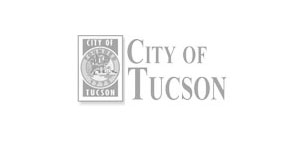Foam roofing systems have gained popularity in recent years due to their remarkable insulation properties and energy efficiency.
However, one of the main concerns for potential buyers is the cost of foam roofs. Are they truly expensive compared to other roofing options? Let’s explore the factors that influence the cost of foam roofs and find out whether they are affordable or not.
Key Takeaways:
- Foam roofs are known for their insulation properties and energy efficiency.
- The cost of foam roofs depends on various factors like knowledge and expertise, safety measures, surface conditions, and roof size and complexity.
- Understanding the cost breakdown and the long-term benefits of foam roofs can help you make an informed decision about their affordability.
Understanding Spray Polyurethane Foam (SPF) Roofing Systems
Spray Polyurethane Foam (SPF) roofing systems are a cutting-edge solution for roofs that offer exceptional insulation and durability. The foam used in SPF roofing is created by combining polyol resin and isocyanate, forming a two-component mixture. When applied, the foam expands and solidifies, creating a seamless and long-lasting protective layer on the roof.
One of the key benefits of SPF roofing systems is their ability to provide excellent insulation. The foam’s composition and application process result in a high R-value, which indicates its resistance to heat transfer. This insulation helps to keep the interior of the building cool in hot weather and warm during colder months, reducing energy consumption and improving comfort.
Furthermore, SPF roofing systems exhibit remarkable resistance to harsh weather conditions. The foam layer acts as a protective barrier against UV radiation, moisture infiltration, and wind damage. This durability extends the lifespan of the roof and reduces the need for frequent repairs or replacements.
SPF roofing can be applied to various roof types, including flat roofs, metal roofs, and sloped roofs. Its versatility makes it suitable for both residential and commercial buildings, offering a wide range of applications across different industries.
Overall, understanding the features and benefits of SPF roofing systems is crucial to realize their value and cost-effectiveness. Whether you are looking to enhance insulation, improve durability, or reduce energy consumption, SPF roofing systems provide an advanced solution for your roofing needs.
Factors Influencing the Cost of Foam Roofs
Several factors contribute to the overall cost of foam roofs, and understanding these elements is crucial when assessing pricing. One of the key cost factors is the knowledge and expertise of the applicator. A properly installed SPF roof requires specialized training and experience, which may impact the overall cost. In addition, safety measures and compliance with regulations can add to the expenses.
The condition of the roof surface is another significant factor affecting foam roof costs. Depending on the state of the roof, additional cleaning and moisture removal may be required, which can increase the overall price.
By evaluating these factors, you can gain a better understanding of why foam roofs may be priced differently. This information will help you make an informed decision when considering the affordability and suitability of foam roofs.
Breaking Down the Costs: Knowledge, Safety, and Surface Conditions
To understand the cost breakdown of foam roofs, it is crucial to examine the specific factors that contribute to the expenses. The knowledge and expertise of the applicator play a significant role, as a well-trained and skilled professional will ensure the proper installation and performance of the SPF roof. Safety measures, including compliance with regulations and the use of high-quality materials, add to the overall cost. The condition of the roof surface, such as the need for extensive cleaning or moisture removal, can also impact the pricing. By breaking down these costs, you can gain insight into the different components that make up the total cost of foam roofing.
Image
Calculating Price Based on Roof Size and Complexity
The size and complexity of the roof play a significant role in determining the price of a foam roof. When it comes to foam roof cost, roof size has a direct impact. Larger roofs require more material and labor, which naturally leads to higher costs. The amount of foam needed to cover a larger roof increases, and more time is required for the installation process. Therefore, it’s important to consider the square footage of your roof when budgeting for a foam roof.
In addition to roof size, the complexity of your roof’s design can also affect the foam roof price. Roofs with chimneys, skylights, or other architectural complexities may require additional work and materials to ensure proper installation. These added elements can increase the cost of the project. It’s essential to factor in these complexities when calculating the overall expense of a foam roof.
The Significance of Coverings and Coatings on SPF Roofs
A crucial aspect of foam roofs is the need for coverings and coatings to protect the SPF from UV light and other external factors. These protective measures are essential for ensuring the durability and longevity of the roof. The type of coating used on an SPF roofing system can have an impact on the overall cost. For instance, acrylic or silicone coatings may vary in price, with some options offering better performance and longevity than others. Additionally, options such as embedded granules or crushed gravel can be applied as part of the coating to provide added durability and resistance to foot traffic.
When considering the cost of coatings on SPF roofs, it’s essential to assess their effectiveness in protecting the foam and enhancing the overall performance of the roofing system. High-quality coatings can contribute to reducing maintenance and repair costs over time, making them a worthwhile investment.
The choice of coating also influences the appearance of the foam roof. Different coatings can provide various colors and finishes, allowing homeowners and building owners to customize the aesthetic appeal of their roofs. This can be particularly important for commercial properties that strive to maintain a consistent brand image.
In summary, the significance of coverings and coatings on foam roof costs cannot be overstated. The right coating choice can protect the SPF from external elements, enhance the durability of the roof, and contribute to long-term cost savings. By carefully considering the options and their associated costs, you can make an informed decision about the protective measures required for your SPF roof.
Are Foam Roofs Expensive? Assessing Thickness and Warranty
Foam roof thickness and warranty are two critical factors to consider when evaluating the cost of SPF roofing systems. The thickness of the foam application can have an impact on the overall cost, as thicker foam requires more materials and labor during installation. Additionally, warranties play a significant role in determining the long-term value and cost-effectiveness of foam roofs.
When it comes to foam roof thickness, it’s important to understand that thicker applications generally come with higher costs. This is because thicker foam requires more materials and additional labor, resulting in increased expenses. However, thicker foam also offers greater insulation and durability benefits, which could potentially translate into energy savings and reduced maintenance costs in the long run. It is crucial to assess the impact of foam roof thickness on the overall cost and weigh the benefits against the upfront investment.
Another key consideration is the warranty offered with foam roofs. While longer warranties may result in higher initial costs, they provide extended protection and potential cost savings in the future. A comprehensive warranty can offer peace of mind by covering potential repairs and replacements, which can be costly without coverage. It is essential to carefully evaluate the warranty considerations for foam roofs and assess their financial implications. A well-structured warranty can enhance the overall value and cost-effectiveness of a foam roofing system.
To better understand the impact of foam roof thickness and warranty on costs, consult with experienced contractors and manufacturers who specialize in SPF roofing systems. They can provide valuable insights and guidance on the most suitable foam thickness and warranty options based on your specific needs and budget.
Benefits of SPF Roofing Beyond the Initial Investment
While the upfront cost of foam roofs may initially seem higher compared to traditional roofing materials, it is essential to consider the long-term benefits and savings. SPF roofing systems offer superior insulation, resulting in reduced energy consumption and lower heating and cooling costs over time. The energy efficiency of foam roofs ensures that your home stays comfortable year-round without excessive energy usage.
The cost savings with foam roofs extend beyond energy efficiency. Foam roofs have exceptional durability and longevity, meaning they require minimal maintenance and can withstand harsh weather conditions. With a foam roof, you can say goodbye to costly repairs and frequent replacements that are common with other roofing options.
Another significant advantage of SPF roofing systems is their ability to seal and protect against moisture. This prevents water damage and reduces the risk of mold and mildew growth, which can be costly to remediate. By investing in a foam roof, you not only save on energy costs but also mitigate the potential expenses associated with water damage and mold remediation.
By exploring the comprehensive long-term benefits of SPF roofing beyond the initial investment, you can evaluate the true cost-effectiveness of this innovative roofing solution. With foam roofs, you not only enjoy the immediate benefits of energy efficiency and savings but also the long-term peace of mind knowing that your home is protected by a durable, low-maintenance roofing system.
Conclusion
In conclusion, the cost of foam roofs depends on various factors. Factors such as knowledge and expertise, safety measures, surface conditions, roof size and complexity, coverings and coatings, foam thickness, and warranties all have an impact on the overall cost. While foam roofs may have higher upfront costs compared to other roofing options, they offer numerous benefits that make them a worthwhile investment.
One of the key advantages of foam roofs is their exceptional insulation properties. By minimizing heat transfer, foam roofs help reduce energy consumption and lead to long-term savings on heating and cooling costs. Additionally, foam roofs are highly durable and can withstand harsh weather conditions, resulting in minimal maintenance and potential cost savings over time.
When considering foam roofs, it is important to carefully evaluate the various cost components and weigh them against the benefits they provide. By making an informed decision based on your specific roofing needs and budget, you can determine whether foam roofs are expensive and whether they are the right choice for you. Overall, foam roofs offer a compelling combination of insulation, durability, and long-term savings, making them a viable option for those seeking a high-performance roofing solution.















